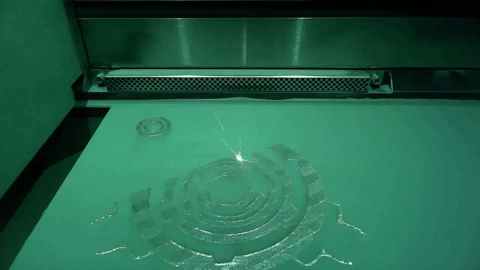The 3D printed “Project X” Aerospike engine made through a collaboration between Monash University, Amaero (an offshoot of Monash), Next Aero and Woodside energy has been successfully fire-tested in Australia.
Design and production of the engine was completed in just four months, following previous prototypes unveiled in 2015.

Superalloys and Aerospikes
The material used to print the rocket engine was “Hasteloy X”, a “high strength nickel based superalloy”. The engine was additively manufactured with selective laser melting (SLM) on an EOS M280 3D metal printer.

Graham Bell, the project leader, noted that 3D printing made key unique design features such as the “nozzle geometry” and “embedded cooling network” possible, features considered by his colleague Marten Jurg in 3D printed rocket engine concept made by Betatype.
According to Jurg, 3D printing the Aerospace engine enabled the team to “create complex designs, print them, test them, tweak them, and reprint them in days instead of months.”
Additionally, the new three-chamber design of the engine allows for directional navigation through thrust vectoring, without the need of a gimbal to tilt the engine. This means the engine can be fixed to the main body of the rocket, and direction controlled by pressure from the rocket’s combustion chambers, improving weight and cost efficiency.
Mission Control
While there are no plans as yet to take the Aerospike engine into space Professor Nick Birbilis, head of the Material Science and Engineering Department at Monash, stipulates, “It illustrates what’s possible for research and industry.”
“Through our spin-out company, Amaero, Australian companies can design, print, and test metal components for everything from aerospace to surgical instruments, hose fittings to air conditioning parts.”
Amaero and Monash also have a partnership with French aerospace manufacturer Safran Power Units, for which the collaborative presented its first 3D printed jet engine mock-up at the Melbourne International Airshow in 2016.
For more news on intergalactic 3D printing, check out our newsletter. Also subscribe to our Facebook and Twitter.
Featured image: The rocket engine is tested in rural Victoria state. Image via Business Insider.


